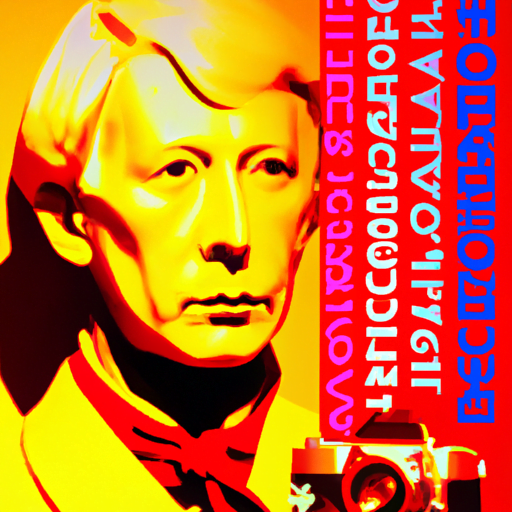
-
Table of Contents
Designing for Social Change: The Role of Activism in Art

Art has always been a powerful tool for expressing ideas, challenging norms, and sparking conversations. Throughout history, artists have used their creative talents to advocate for social change and raise awareness about important issues. From political posters to street art, the intersection of art and activism has played a crucial role in shaping societies and inspiring movements. In this article, we will explore the role of activism in art and how designers can use their skills to create meaningful change.
The Power of Art in Activism
Art has the ability to transcend language barriers and connect with people on an emotional level. It can evoke empathy, provoke thought, and inspire action. When combined with activism, art becomes a powerful tool for social change. Here are some reasons why art is an effective medium for activism:
- Visual Impact: Art has the power to capture attention and make a lasting impression. Whether it’s a thought-provoking painting or a powerful mural, visual art can communicate complex messages in a way that words alone cannot.
- Emotional Connection: Art has the ability to evoke strong emotions and create empathy. By tapping into people’s emotions, art can inspire them to take action and support a cause.
- Accessibility: Art is accessible to everyone, regardless of their background or education. It can be displayed in public spaces, shared on social media, or exhibited in galleries, reaching a wide audience and sparking conversations.
- Subversion of Norms: Art has the power to challenge societal norms and provoke critical thinking. By presenting alternative perspectives and questioning the status quo, art can inspire people to question their own beliefs and consider new possibilities.
Examples of Art as Activism
Throughout history, there have been numerous examples of artists using their work to advocate for social change. Let’s explore some notable examples:
Guerilla Girls
The Guerilla Girls are a group of anonymous female artists who use art to expose gender and racial inequalities in the art world. Through their provocative posters, performances, and public interventions, they have been able to raise awareness about the underrepresentation of women and people of color in galleries and museums. Their work has sparked important conversations and led to increased diversity in the art world.
Banksy
Banksy, the anonymous street artist, is known for his politically charged and thought-provoking graffiti. His work often tackles issues such as capitalism, war, and government surveillance. By using public spaces as his canvas, Banksy is able to reach a wide audience and challenge societal norms. His art has inspired countless others to use public spaces as a platform for activism.
Keith Haring
Keith Haring was an artist and activist who used his iconic pop art style to raise awareness about social issues such as AIDS, racism, and homophobia. His bold and colorful murals became symbols of activism and hope during the 1980s. Haring believed that art should be accessible to everyone, and he used his work to educate and inspire change.
Designing for Social Change
Designers have a unique role to play in activism. They have the skills to create visually compelling and impactful work that can amplify the messages of social movements. Here are some ways designers can use their skills to design for social change:
- Visual Storytelling: Designers can use their skills to tell powerful stories through visuals. By creating compelling graphics, illustrations, and infographics, designers can communicate complex ideas in a visually engaging way.
- Brand Identity: Designers can help social movements develop a strong brand identity that resonates with their target audience. A well-designed logo, color palette, and typography can help create a cohesive and recognizable visual identity for a movement.
- Print and Digital Media: Designers can create impactful posters, flyers, and digital media campaigns to raise awareness about social issues. By using compelling visuals and persuasive messaging, designers can inspire action and mobilize communities.
- User Experience Design: Designers can create user-friendly websites and apps for social change organizations. By designing intuitive interfaces and seamless user experiences, designers can help organizations effectively communicate their mission and engage with their audience.
Case Studies: Design for Social Change
Let’s explore some case studies that demonstrate the power of design in driving social change:
The Black Lives Matter Movement
The Black Lives Matter movement has been able to create a powerful visual identity through design. The movement’s logo, featuring a raised fist in the colors of the Pan-African flag, has become a symbol of resistance and solidarity. Designers have also created impactful posters, social media graphics, and merchandise that have helped raise awareness about police brutality and systemic racism.
The Climate Strike Movement
The climate strike movement, led by young activists such as Greta Thunberg, has effectively used design to mobilize millions of people around the world. Designers have created eye-catching posters, banners, and social media graphics that have helped spread the message of urgency and inspire action to address the climate crisis.
Conclusion
Art and activism have always been intertwined, with artists using their creative talents to challenge the status quo and advocate for social change. Designers, in particular, have a unique role to play in designing for social change. By creating visually compelling and impactful work, designers can amplify the messages of social movements and inspire action. Whether it’s through visual storytelling, brand identity, or user experience design, designers have the power to shape societies and create a better future through their work.
As we move forward, it is important to recognize the power of art and design in driving social change. By supporting and amplifying the work of artists and designers who are using their talents for activism, we can create a more inclusive and equitable society. Let us embrace the intersection of art and activism and continue to use our creative skills to make a difference.
